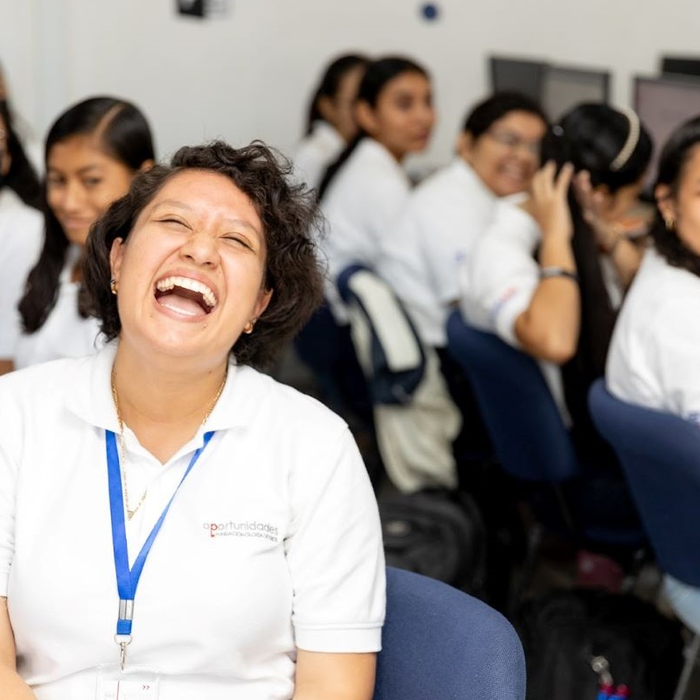Debunking Higher Education Myths

Myth 1: Higher education only includes four-year universities or colleges.
USAID's work in higher education includes more than traditional universities. It includes a diverse spectrum of post-secondary education including universities, community colleges, teacher training institutions, technical and vocational institutions, research institutions, as well as e-Learning and face-to-face instruction.
For example, the USAID Connecting the Mekong through Education and Training (USAID COMET) project is a five-year (2014-2019) workforce development program, done in collaboration with the Department of State, that equips youth with market-driven skills, promotes gender-balanced employment in key sectors and increases technology-based learning in classrooms. And in in Guatemala, Honduras and Jamaica, the Advance Program, funded by USAID, works to improve youth employability by strengthening the capacity of select two-and-three-year technical tertiary education programs to provide market-relevant, quality training to disadvantaged youth.
In South Sudan, a partnership between Indiana University and the University of Juba helped address the needs of educational institutions, teachers, and students affected by conflict through a Master’s in Emergency Education program. The project worked to support and empower students, including women and underrepresented ethnic groups, with a focus on conflict transformation, promoting peace building and creating social cohesion.
And in Indonesia, the world’s third largest democracy, USAID works to increase the research capacity of Indonesian higher education scholars via the Sustainable Higher Education Research Alliances (SHERA) program. Through SHERA, Indonesia and U.S. researchers conduct world-class research and collaborate with higher education institutions in the fields of science, technology and innovation, and improve the enabling environment for quality research, and professional development opportunities for women.
Myth 2: Higher education is only for the elite.
This myth is likely rooted in the belief that higher education is only accessible to the wealthy. While it’s true that higher education can be costly, the reality is that USAID scholarship programs focus on enabling access to higher education for many marginalized and disadvantaged students.
For example, USAID’s Merit and Needs-Based Scholarship Program enables talented yet economically disadvantaged Pakistani youth to earn a bachelor's or master's degree at any of 31 partner universities across Pakistan. The scholarships cover student housing, textbooks, a food stipend and tuition. Similarly, in Lebanon, USAID provides merit-based scholarships to financially needy and academically eligible public school graduates from across the country. These scholarships enable students, often from marginalized families that would otherwise have no possible means to attend these schools, to study at the highest-quality Lebanese universities.
Beyond helping disadvantaged populations access four-year colleges and universities, USAID higher education initiatives also provide technical and vocational training. In the Latin America/Caribbean region, for example, the Scholarship for Education and Economic Development (SEED) Program provided custom designed technical training and educational opportunities to youth and community leaders from economically disadvantaged and historically underserved populations, including women, people with disabilities, and members of ethnic/indigenous groups. The program, which officially closed in 2015, equipped recipients with skills training, leadership development, and English as a Second Language (ESL), supporting fundamental development sectors such as agriculture, education, and the environment.
Myth 3: Higher education can’t bring families out of poverty.
Returns to higher education for an individual in relation to the earnings of the individual are higher than at any other level of education. Higher education graduates earn an estimated 15.2 percent increase in earnings, as compared with 10 percent for primary and 7 percent for secondary education graduates. And in areas where USAID works, tertiary returns are likewise high; for example, in Sub-Saharan Africa, those returns are 21 percent. Graduates and their families also experience an increase in consumption efficiencies and savings rates, as well as reduced inequality of incomes and increased access to opportunities.
But higher education doesn’t only unlock individual access to prosperity; these individual wage increases have tremendous ripple effects for society as well: Each additional year of education is associated with 18% higher GDP per capita.
Stronger host country economies create opportunities across the global economy.
Myth 4: Higher education doesn’t benefit society.
Research testifies to the multi-dimensional ways in which higher education contributes to a society’s growth and development. Graduates of higher education programs and institutions are more likely to be civically engaged, are critical thinkers and play a role in poverty alleviation—all of which benefit society at large.
Higher education helps power development through the formation of human capital (the skills, knowledge, and experience possessed by an individual or population). Learners build knowledge bases via education, which they then disseminate and maintain intergenerationally.
Girls and women in particular benefit long-term from higher education. Educated women are more likely to feel empowered to make decisions about their bodies and futures. This is reflected at the family level and more broadly. For example, graduates of higher education experience decreased birth rates and smaller family sizes, which can boost a family’s quality of life through reduced expenditures on food, more time to spend on work or leisure activities, and more.
More broadly, higher education promotes gender equality and women’s empowerment, which are fundamental to ending extreme poverty and promoting resilient, democratic societies. When women play an active role in civil society and politics, governments tend to be more open, responsive and transparent, and in post-conflict areas, peace agreements are more durable. The world quite literally benefits when women are educated and empowered.
Related Blog Posts

Embracing Effective Learner-Centered Approaches in Higher Education

One Year in Higher Education, Five Activities to Keep Learning From
